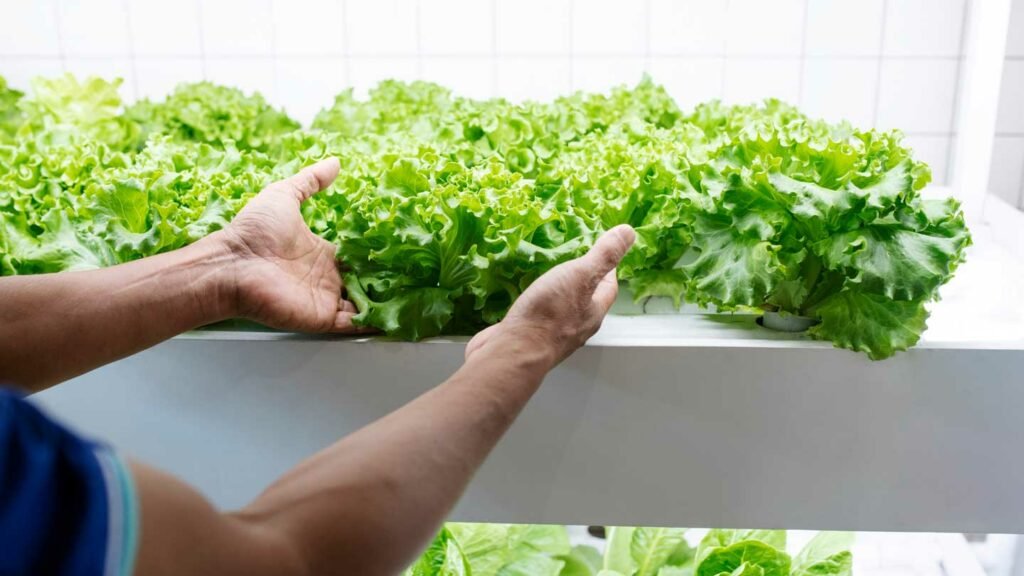Want fresh tomatoes in January? Crisp lettuce in July? With hydroponic gardening, you can grow vegetables year-round right in your own home. Hydroponics is a method of growing plants without soil by using nutrient-rich water solutions.
This post shares hydroponic techniques for indoor veggie gardening during any season. With the right setup and care, hydroponic gardens can yield fresh produce no matter the season.
Discover how to select plants, build a system, care for crops, and enjoy homegrown produce! Therefore, continue reading before you look for aeroponic farming vs hydroponic.
Build A Hydroponic System For Indoor Growing
To develop vegetables without soil, you really want a tank-farming framework that conveys supplement answers for plant roots. Famous choices for amateurs incorporate profound water culture, wick frameworks, and dribble frameworks.
Plants are suspended in buckets of nutrient-rich, oxygenated water for deep water culture. Absorbent wicking materials are used in wick systems to bring water up to plants from reservoirs.
A dribble framework gradually trickles supplement arrangement onto plant roots. You can buy kits or make your own by using plastic buckets, grow lights, air pumps, and net pots to make a small setup.
Place your tank-farming framework close to a water source and plug. Stacking buckets or PVC pipe towers can be used vertically to make the most of limited space. Scale your framework to accessible room and lighting.
Care For Hydroponic Vegetable Crops
In order to properly care for hydroponic vegetable crops, the nutrient solution and system conditions must be closely monitored. Regularly, check and adjust the pH and nutrient levels in the water. Aquaculture supplements come in fluid or powder recipes.
Begin seeds or move seedlings into develop media like perlite, dirt pellets, or rockwool in net pots. Roots should be able to reach the water by suspending pots in the system. Give 16 hours out of each day of full range develop lights.
To keep diseases at bay, let the system breathe. Top off water on a case by case basis, transforming it totally every 1 fourteen days. Prune tomato suckers and prune back catapulting greens.
Trellises can help crops like vines climb. Distinguish and treat bug or sickness gives immediately in this shut climate. With great support, aqua-farming frameworks let you develop vegetables quicker and all the more productively.
Appreciate New Veggies From Your Aqua-farming Nursery
Presently for the remunerating part – gathering your hydroponically developed vegetables! Start cutting mixed greens once they arrive at 4-6 inches tall. Remove the outer leaves from spinach and lettuce, allowing the inner leaves to grow.
By cutting stalks above the lowest leaves, chard can be harvested. Pick spices frequently, squeezing off tops and stems. Tomato plants will begin fruiting after around 90 days. Delicately turn tomatoes to separate when completely shaded.
Pepper plants additionally require 3-4 months to deliver ready natural product. Check cucumbers everyday once they start aging. Pick snap beans when the pods are full but before the seeds bulge, and time bean harvests according to seed variety.
Radishes mature in only 3 a month – pull up whole roots once bulbs size up. With various little gathers rather than one huge one, a minimal tank-farming framework gives new vegetables all year!
Reaping The Benefits Of Year-Round Harvests
With some planning and effort, hydroponic systems can yield nonstop produce. Enjoy fresh and the best vegetables to grow in hydroponics during winter. Grow herbs and veggies not easily found at markets.
Hydroponics conserves water, uses less space, and eliminates weeding or soil-borne diseases. Plants tend to grow faster with higher yields.
Nothing beats the taste and convenience of vegetables and herbs picked right from your indoor oasis. Embrace the benefits of gardening year-round with the power of hydroponics!
Conclusion
Hydroponic gardening lets you grow bountiful vegetables without soil during any season. The techniques of choosing suitable plants construct a system, properly caring for crops and harvesting produce.
You can enjoy ripe tomatoes in winter and lettuce in summer. Hydroponics makes possible a sustainable, space-efficient way to put garden-fresh veggies on your table 365 days a year.
Give it a try and see how with a little effort you can become a year-round hydroponic veggie grower!


